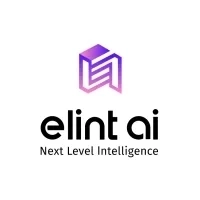Introduction
Cloud computing has advanced significantly, reshaping the software development approach and allowing businesses to shift from infrastructure-heavy models to agile, scalable, and service-oriented architectures. Among these options, Platform-as-a-Service or PaaS has become a popular choice for companies seeking flexibility, faster development cycles, and better resource efficiency. At the heart of this shift is Python, one of the most adaptable programming languages in today's technology ecosystem.
In 2025, organizations are not just exploring cloud application development; they are actively rethinking how applications are built, deployed, and scaled in real-time environments. Python offers flexibility with an extensive library ecosystem and compatibility with various PaaS platforms, making it a leading choice for companies pushing innovation in cloud-native settings.
For organizations partnering with a Python software development company, this approach guarantees access to proven expertise and frameworks that meet the demands of high-performance cloud applications.
Python as the Language of Cloud-Native Innovation
Python has steadily become one of the most widely adopted languages for Cloud Application Development because of its simplicity and adaptability. PaaS platforms, such as AWS Elastic Beanstalk, Microsoft Azure App Service, and Google App Engine, provide native support for Python, allowing seamless deployment and scaling of applications.
What sets the programming language apart from others is its ability to deliver enterprise-grade applications through shorter development cycles. Its syntax is clean and intuitive, enabling developers to focus on building functional business solutions rather than dealing with low-level complexities. Furthermore, the language supports microservice architecture, containerization, and serverless deployments, all of which are the critical pillars of modern PaaS ecosystems.
Why Python is Critical for PaaS in 2025
The surge in demand for PaaS platforms is driven by enterprises that need to innovate faster without being weighed down by infrastructure management. Python is ideally suited to meet these requirements because of its comprehensive library support, ranging from frameworks like Django and Flask for web applications to libraries such as NumPy, Pandas, and TensorFlow for AI-driven workloads.
In a cloud-native environment, Python accelerates development through reusable components, extensive APIs, and integration capabilities. For instance, it facilitates real-time analytics applications that can be deployed directly onto cloud environments without significant re-engineering. Additionally, Python’s compatibility with container orchestration tools like Kubernetes ensures that applications built for PaaS platforms remain scalable and fault-tolerant.
For enterprises working with a Python software development company, the advantage lies in leveraging expert-driven deployment strategies that optimize performance and cost-efficiency across multiple cloud environments.
The Role of Python in Streamlining Cloud Architectures
One of Python’s key contributions to Cloud Application Development is its ability to simplify complex architectures. Cloud-based systems often rely on distributed frameworks where different components must interact seamlessly. Python’s lightweight design and extensive module ecosystem allow developers to build modular, maintainable applications that integrate with databases, APIs, and external services with minimal overhead.
Moreover, Python supports event-driven and serverless models that are integral to PaaS offerings. By enabling businesses to deploy functions as services, it reduces operational costs while improving response times. As organizations embrace real-time customer engagement and data processing, Python’s role in handling asynchronous operations and concurrent workloads becomes a critical differentiator.
Security and Compliance in Python-Driven PaaS Development
Security is a central concern for enterprises adopting cloud-based platforms. In industries such as finance, healthcare, and government, regulatory compliance and data integrity drive technical decisions as much as performance and cost. Python provides multiple libraries, frameworks, and encryption tools that meet enterprise-grade security standards.
When used in Cloud Application Development, Python offers built-in capabilities for managing secure APIs, implementing role-based access control, and integrating identity management solutions.
Furthermore, open-source security frameworks and regular community updates ensure applications remain resilient against evolving threats. Enterprises often rely on seasoned development teams with domain expertise to implement these security layers effectively, ensuring both compliance and operational integrity.
Performance Optimization and Scalability
Cloud-native applications are designed for scalability, and Python enhances this capability through its ability to handle high-volume data processing, asynchronous workflows, and performance optimization techniques. Despite perceptions of Python as an interpreted language with performance constraints, the combination of Just-In-Time (JIT) compilation techniques, cloud caching mechanisms, and load-balancing strategies ensures that enterprise-grade applications perform seamlessly at scale.
For PaaS platforms, Python enables auto-scaling capabilities, ensuring that applications adjust to fluctuating workloads in real time. Whether handling peak transaction volumes in e-commerce or running predictive analytics models in manufacturing, Python’s flexibility allows developers to optimize performance without sacrificing speed of development.
Cost Efficiency and Development Agility
One of the defining advantages of Python is its cost efficiency in building and maintaining cloud applications. Its extensive library ecosystem reduces the need for custom development, while its straightforward syntax shortens development cycles. For enterprises, this translates into reduced time-to-market and lower overall ownership costs for cloud-based solutions.
Additionally, the adaptability of Python allows organizations to implement phased deployment strategies. This means enterprises can begin with minimal viable functionalities and gradually expand features as business needs evolve, without incurring the costs of a complete overhaul. Such approaches are particularly valuable for PaaS environments where agility and adaptability determine long-term success.
Industry Applications Driving Python-Powered PaaS Adoption
Python’s utility extends across multiple industries, embracing cloud-native transformation. In retail, Python-driven PaaS applications support inventory automation, predictive analytics, and personalized customer engagement.
In healthcare, Python facilitates secure data exchange, telemedicine applications, and AI-assisted diagnostics—all deployed seamlessly within cloud platforms. Manufacturing enterprises leverage Python-based PaaS solutions for real-time supply chain monitoring and IoT-driven production systems, ensuring operational agility and cost optimization.
Across these sectors, the common denominator is the need for scalable, secure, and high-performance applications—requirements that Python fulfills effectively. Enterprises are increasingly turning to Cloud Application Development approaches centered around Python to future-proof their operations and gain competitive advantages in highly dynamic markets.
Future Outlook: Python and Cloud-Native Convergence
The convergence of Python and PaaS development will continue to shape enterprise cloud strategies in 2025 and beyond. The growing adoption of AI, automation, and event-driven computing underscores the need for languages that can evolve with emerging technologies. Python’s strong developer community, vast open-source ecosystem, and support for hybrid and multi-cloud strategies position it as a cornerstone for next-generation cloud applications.
Enterprises planning long-term investments in cloud technology stand to benefit significantly from leveraging Python within PaaS frameworks. Working with experienced teams who understand the nuances of cloud-native architecture, compliance standards, and integration best practices ensures that development efforts translate into measurable business outcomes.
Conclusion
Python is not just a development language; it is a critical enabler of enterprise-grade cloud transformation strategies. Its compatibility with major PaaS platforms, robust library ecosystem, and ability to handle everything from microservices to AI-driven workloads make it indispensable for Cloud Application Development.
Organizations collaborating with a Python software development company gain access to not only technical expertise but also strategic guidance that ensures scalable, secure, and cost-efficient solutions. In 2025, as businesses strive to innovate faster while optimizing resources, Python continues to stand at the forefront of cloud-native evolution, powering the next wave of enterprise applications.
















